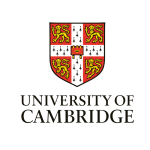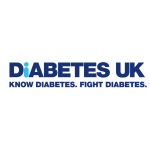The Impact of Saturated and Trans Fats on Cholesterol Levels
Saturated and trans fats play a significant role in cholesterol levels. These types of fat, found in many processed foods and animal products, can raise your blood cholesterol level. High levels of bad LDL cholesterol can increase the risk of cardiovascular disease.
You can lower your cholesterol by eating fewer foods high in saturated and trans fats. Instead, eat foods high in unsaturated fats, such as avocados and oily fish. These can help raise HDL, or “good cholesterol,” levels, which help remove LDL from the bloodstream.
It is a good idea to understand the difference between dietary cholesterol and blood cholesterol. While it was previously thought that high dietary cholesterol could raise blood cholesterol levels, recent research suggests this isn’t always the case.
However, some individuals are more sensitive to dietary cholesterol, such as those with familial hypercholesterolaemia.
The American Heart Association recommends limiting saturated fat intake to 5-6% of total daily calories. For instance, for someone eating 2000 calories a day, that’s about 13 grams of saturated fat. Trans fats should be avoided as much as possible.
Omega-3 Fatty Acids and Heart Health
Omega-3 fatty acids are a type of healthy fat that can improve heart health. They have no effect on LDL cholesterol, but they do have other advantages, such as lowering blood pressure and lowering the risk of blood clots, which can lead to heart attacks.
Foods high in omega-3 fats are a great addition to your diet if you want to lower cholesterol. These include oily fish like salmon, mackerel, and sardines. The Heart Foundation recommends at least two servings of oily fish per week.
In addition to oily fish, other sources of omega-3 fats include chia seeds, flaxseeds, and walnuts. These can be easily added to a variety of dishes for quick omega-3 boost.
Unsaturated fats, such as omega-3 fatty acids, can help increase ‘good’ HDL cholesterol while decreasing ‘bad’ LDL cholesterol. You can improve your cholesterol levels and overall heart health by focusing on these types of fats.
The Role of Sugar and Fiber in a Cholesterol-Lowering Diet
Dietary fibre and sugar can both have an impact on cholesterol levels, but in differing ways. Soluble fibre, found in foods like oats and lentils, can help lower ‘bad’ LDL cholesterol by reducing the amount of cholesterol absorbed into your bloodstream.
Interestingly, most adults in the UK don’t get enough fibre in their diet. The recommended daily intake is 30g, but many people fall short. By making an effort to increase fibre intake, you can improve your cholesterol levels and overall heart health.
Remember that added sugar can have a negative impact on heart health. It can lead to weight gain, which can raise cholesterol levels and increase the risk of heart disease. Choosing to limit your intake of foods and drinks high in added sugar can help maintain healthy cholesterol levels.
Another type of healthy fat, monounsaturated fats, can help lower bad cholesterol while increasing good cholesterol. Olive oil, nuts, and avocados are high in monounsaturated fats. Including these in your diet can help you manage your cholesterol levels.






















